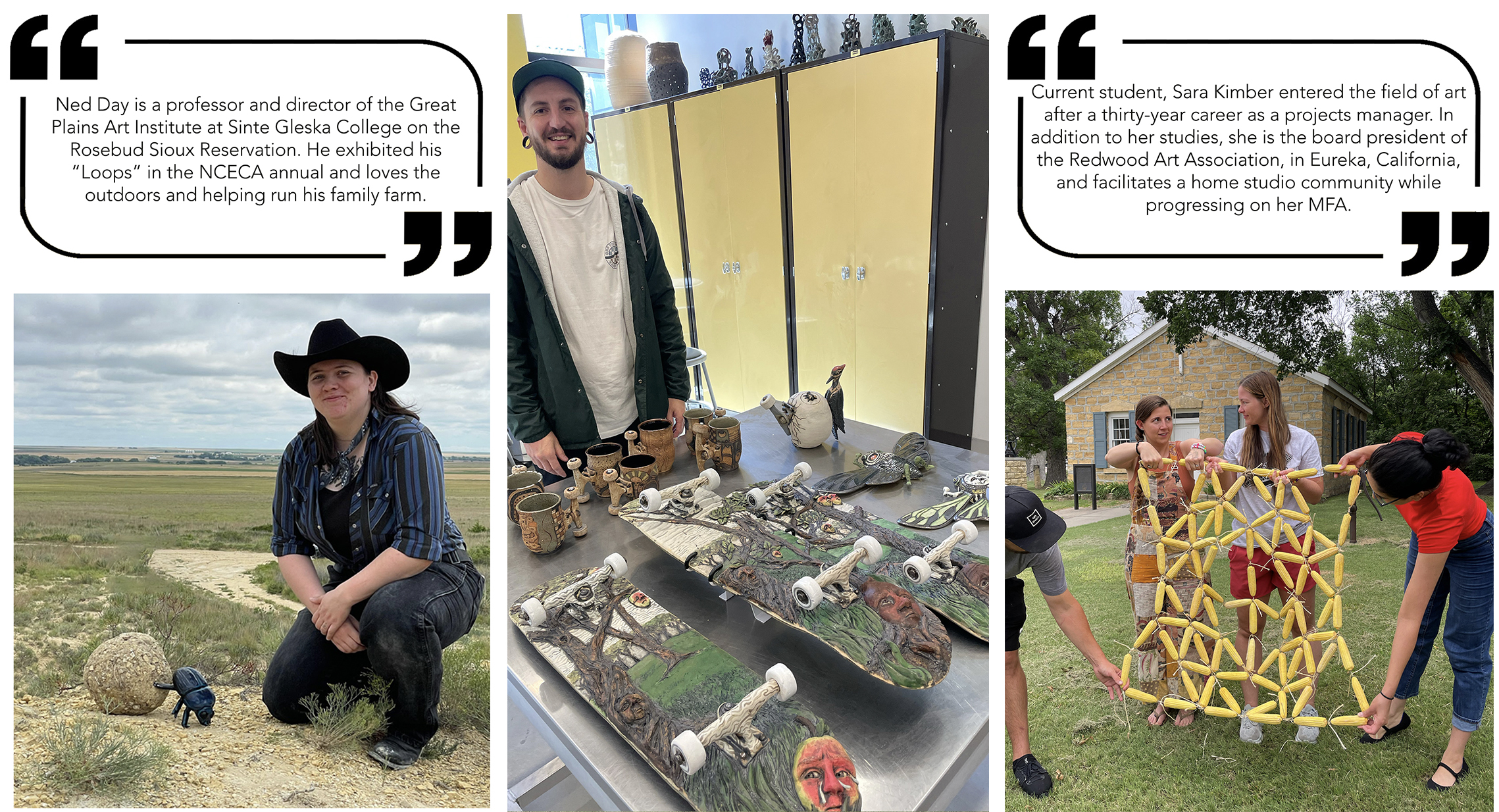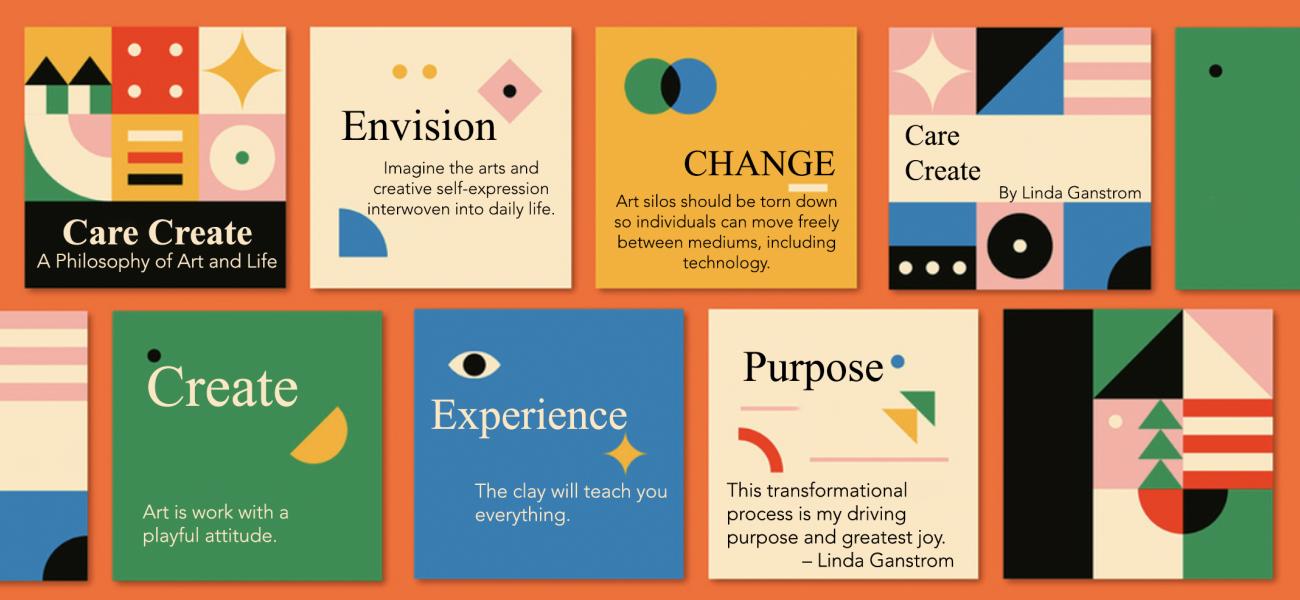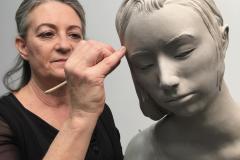Care Create – A Philosophy of Art and Life
Envision
Envision a global culture where universal well-being and community are the highest values. Imagine the arts and creative self-expression interwoven into daily life. Everyone has access to art materials, teachers, and role models. Think of the professional arts leadership needed to bring this vision to life. Working for over thirty years as a Ceramics professor at Fort Hays State Universit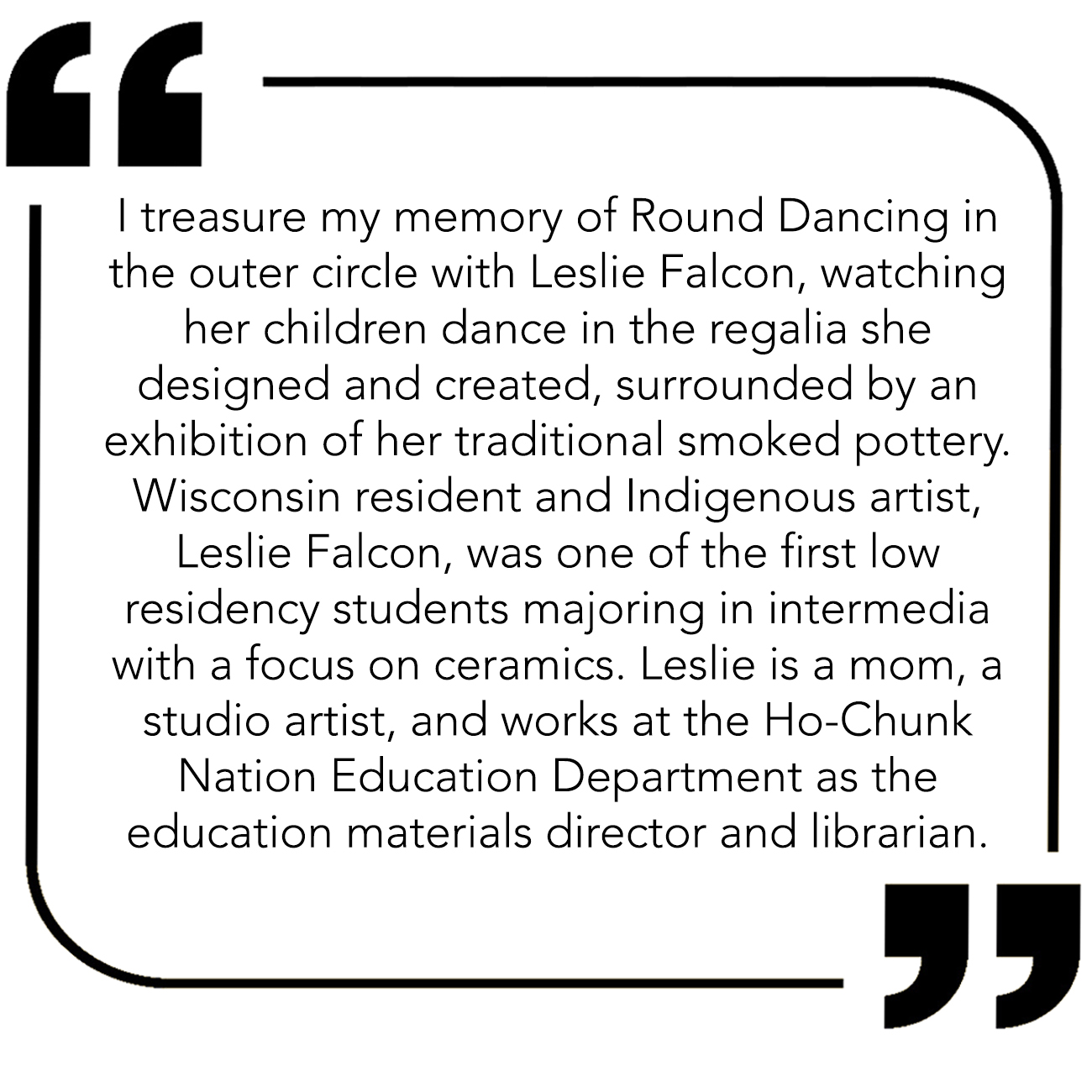 y (FHSU) in Western Kansas, I have supervised nearly sixty MFA students and developed an inclusive, pluralistic vision for the MFA program. Punctuated by student success stories, this is my story about the elusive art of assisting in the growth of artists/leaders and the creative community. Art is for all.
y (FHSU) in Western Kansas, I have supervised nearly sixty MFA students and developed an inclusive, pluralistic vision for the MFA program. Punctuated by student success stories, this is my story about the elusive art of assisting in the growth of artists/leaders and the creative community. Art is for all.
Relatively recently, the crafts or “art for life” were separated from the “fine” arts, with the crafts relegated to a lower status while machines replaced skilled hands in the making of things. The fine arts settled into the rarified air of an elite intellectual activity focused on the upper class. As a society, we distanced ourselves from growing and making things, increasingly surrounding ourselves with manufactured goods, often plastic, smothering and starving our bodies and souls of the nourishment we crave. It is time to wake up and re-establish our values with an understanding that daily decisions impact our well-being and that of the planet. Artistic engagement is key to renewing creativity, well-being, connection, sustainability, purpose, and joy.
Envision a creative culture that is equal in status and value to the health/sports field. Just as we value good nutrition and physical health as a basic human right, universal access to materials and facilities for artistic self-expression are essential to quality of life. Imagine affordable or free creative community studios filled with art-making equipment: wheels, kilns, presses, looms, saws, forges, easels, and the “personal trainers” to help use them. Working out with art is pleasurable, offers satisfaction, a fresh mental outlook, and builds creative muscle. Imagine apartment buildings with studios next to the workout rooms. Art makes you happier and builds human connections. Imagine healthier, happier people.
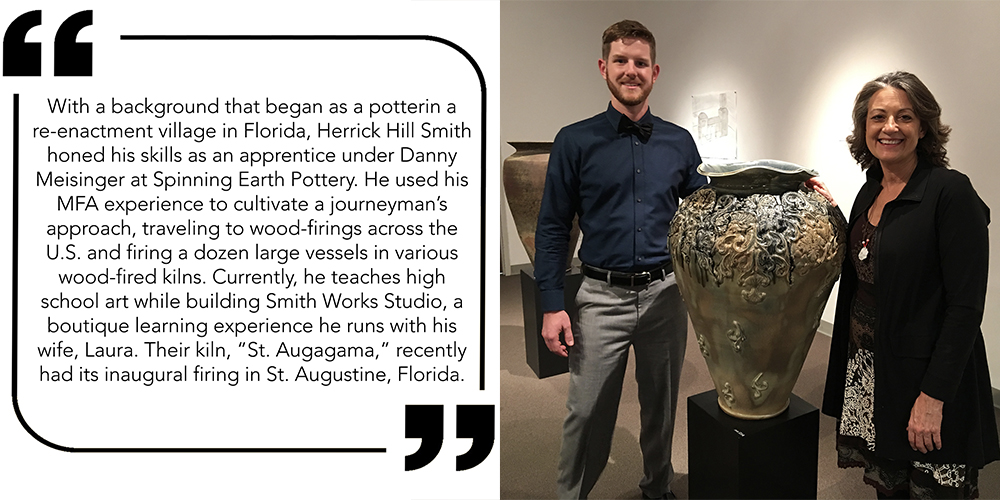
If the foundation of creative culture offers everyone self-expression and fulfillment through making things, a robust pyramid of the creative community should rise to serve that population. Professionals would become highly valued teachers and facilitators. Extraordinary artistic experiences would rise to the status of cultural entertainment as superstars share masterpieces, displaying the skills they had dedicated focus and energy to developing. Everyone could share in the amazement and joy of their creations and gain insight through considered contemplation and conversation. Artistic living embellishes spaces with fabulous art. Technology spreads creative accomplishments and experiences to a global audience. Imagine if talking about art were as ingrained in our communities as conversations involving sports. Imagine if art stars such as Beth Cavener, Roberto Lugo, and Rose B. Simpson were as well-known as Patrick Mahomes or Michael Jordan. Just Imagine.
Act
If art is for everyone, the concept that art is for only the elite, highly educated individual must be exploded. We need creative access for the youngest to the oldest members of society. Arts silos should be torn down so individuals can move freely between mediums, including technology. The creative arts should be integrated into our public and private schools with fully equipped labs, well-educated and compensated artist, teachers, and their assistants, and limited class sizes. Community art facilities and artist-teachers should be provided to every co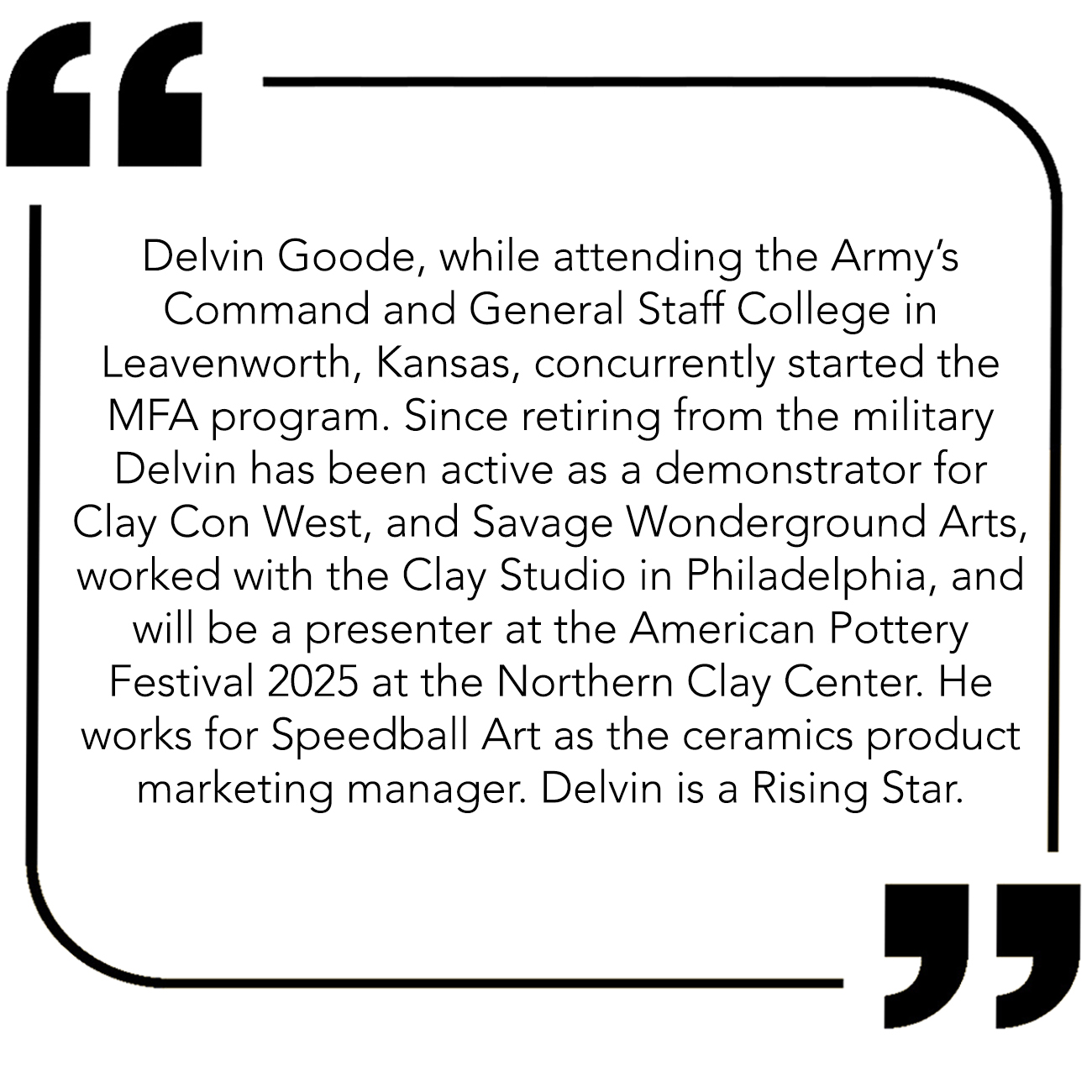 mmunity through private businesses or government support. Art therapy should be integrated into personal, family, and addiction counseling, as well as work with populations in prisons and shelters. Preparing artists, teachers, and leaders with a broad knowledge base of materials and processes, experiences, and skills for engaging the community is essential.
mmunity through private businesses or government support. Art therapy should be integrated into personal, family, and addiction counseling, as well as work with populations in prisons and shelters. Preparing artists, teachers, and leaders with a broad knowledge base of materials and processes, experiences, and skills for engaging the community is essential.
Assisting teachers with skilled managers to run studios and trained educator assistants to connect with the wide variety of learners will allow artist-teachers time for their own work-life balance and artistic contributions. No one expects a chef to work in the kitchen alone. Coaches need assistants. Doctors need nurses and staff to care for our sick. Art teachers, especially those in Ceramics, need support to maintain their facilities and assistance in working with individual learners to engage students more deeply. Arts facilities need funding for the creation, programming, maintenance, growth, and skilled staff. Investments in arts facilities and jobs should assist in growing healthier, happier communities while providing jobs for arts professionals and growing the economy of the creative culture.
As we move from an educational system focused on the written word and memorization to more critical thinking and imaginative engagement with knowledge and content assisted by artificial intelligence, the skills taught in creative settings will become increasingly important. Skills in storytelling, creative problem solving, emotional expression, community connection, collaboration, 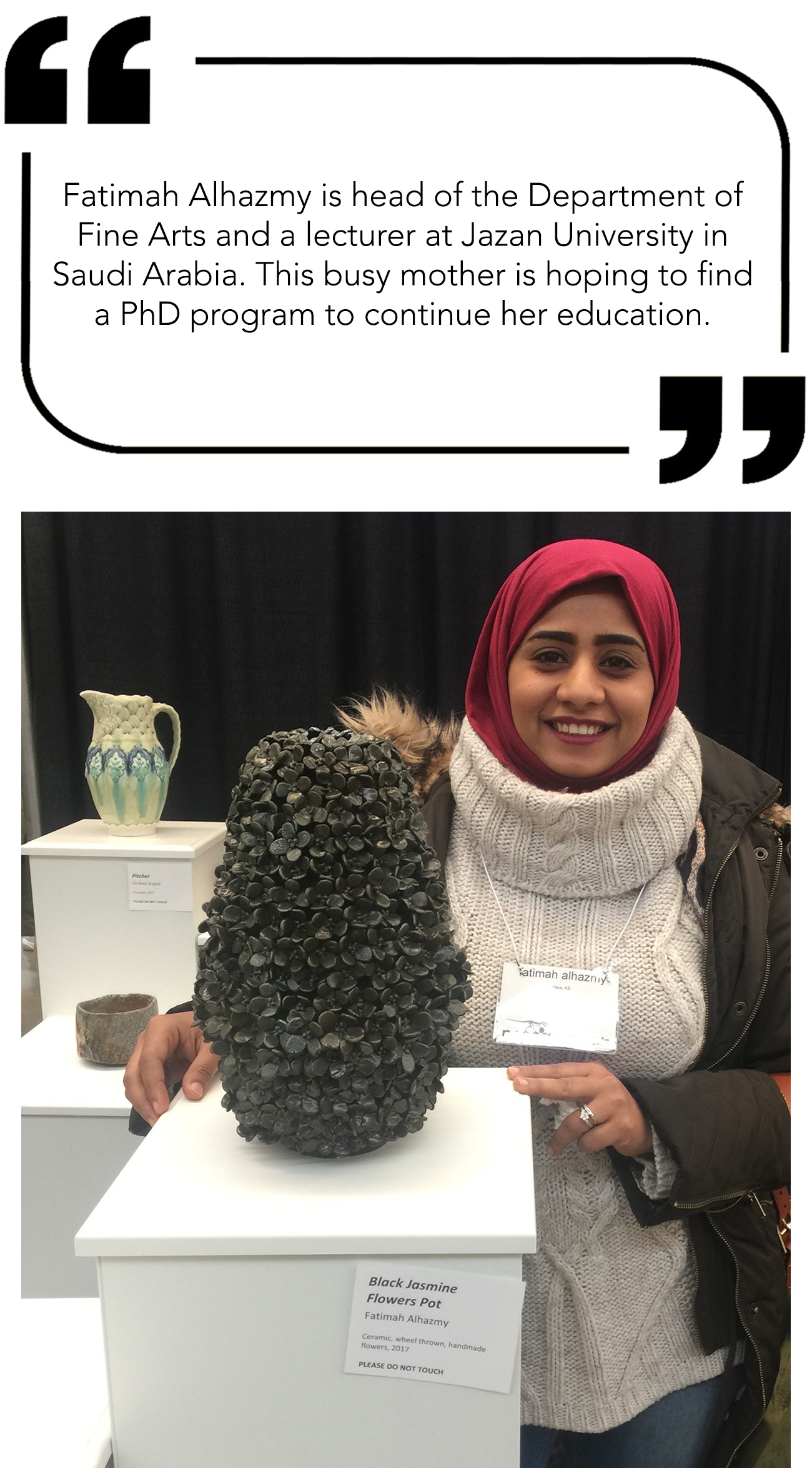 and interpersonal communication through integrated experiences involving the body and mind will increasingly be needed as we seek a balance between screen time and life, involving personal expression and interaction.
and interpersonal communication through integrated experiences involving the body and mind will increasingly be needed as we seek a balance between screen time and life, involving personal expression and interaction.
Fueling my teaching philosophy and purpose as an educator, artist, and cultural leader, I am encouraged by evidence that this vision is gaining momentum. High school students are creating incredible art as art education is available or even required for everyone. Evident in many communities, local art centers offer studio opportunities for all ages to connect with others and develop deeper human expression through engagement in artistic activities. Museums, galleries, and art events allow people to engage with artists, experience their vision, truth, and beauty, or collect and live with handmade things in their everyday lives. Artists are interfacing with businesses and making artwork accessible to mass markets. Art is in action.
Honored to join this movement towards a more dynamic creative culture by developing the ability of emerging artists who cross my path and deepen their skills as cultural leaders, I continue to sharpen my vision and shift my methods. Seeking to teach and encourage artists/leaders in ways they can continue to use as professional studio artists grow this creative culture, one artist, one community at a time, joining others in a wave to shift cultural and personal perspectives to create a global movement towards a brighter future.
Teaching in rural western Kansas, the early innovation and engagement of FHSU in embracing technology to educate from a distance offered an opportunity to develop the MFA program with a low-residency option, expanding its reach. The requirements for the MFA are the same for resident and online learners; only the students in the low residency program provide their own studio and travel to campus at least once a semester for a final meeting. At the heart of the program, student artists focus on developing their art and career by embracing a vision springing from their goals and values. Through a structure that demands considered development through practice and research, students are encouraged to become aware of their voices and grow their curiosity, skills, style, and audience. The “series” system promotes growth and improvement and is supported by written and critical conversations. Students understand what works and where they want to adjust their practice to promote growth. Students dive into the course content focused on understanding ceramic art history and contemporary art, materials, and processes, as well as professional business practice with community engagement and communication in a varied curriculum, rotated over a three-year cycle, leading to a thesis exhibition. Comparing self-grading using a detailed rubric to peer and faculty evaluation is helpful in pinpointing areas for improvement and growth. Encouraged to set high goals, knowing that if they don’t accomplish everything, they still achieve a significant amount of growth and produce a body of work, helps them move towards their professional goals.
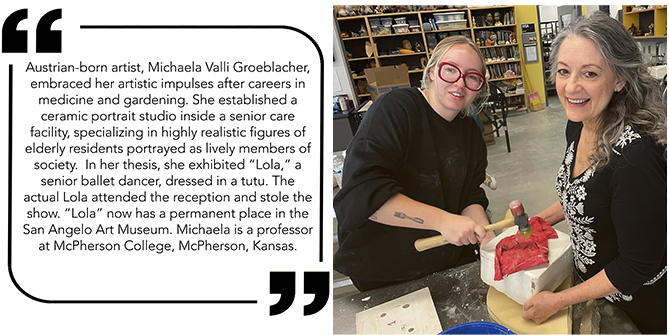
Not a finishing school, the MFA program offers time (a maximum of eight years) to evaluate skills and accomplishments, develop fresh perspectives, and move in new directions. Techniques, materials, and processes are demonstrated each semester to fill gaps or build mastery in the student’s skillset with the aim of developing a broad base of competency. Students are offered time to try techniques not associated with their personal art. As the learning is integrated, students are encouraged to incorporate elements into their individual art, create a presentation, and offer a workshop to hone their skills.
Empower
To benefit the most from the discussion, students are asked to state their goals and ask the questions they want feedback on. Most conversations are between two individuals. Listeners are directed to imagine the stated goals, answer the specific questions, and provide the requested feedback, rather than telling the artist how to 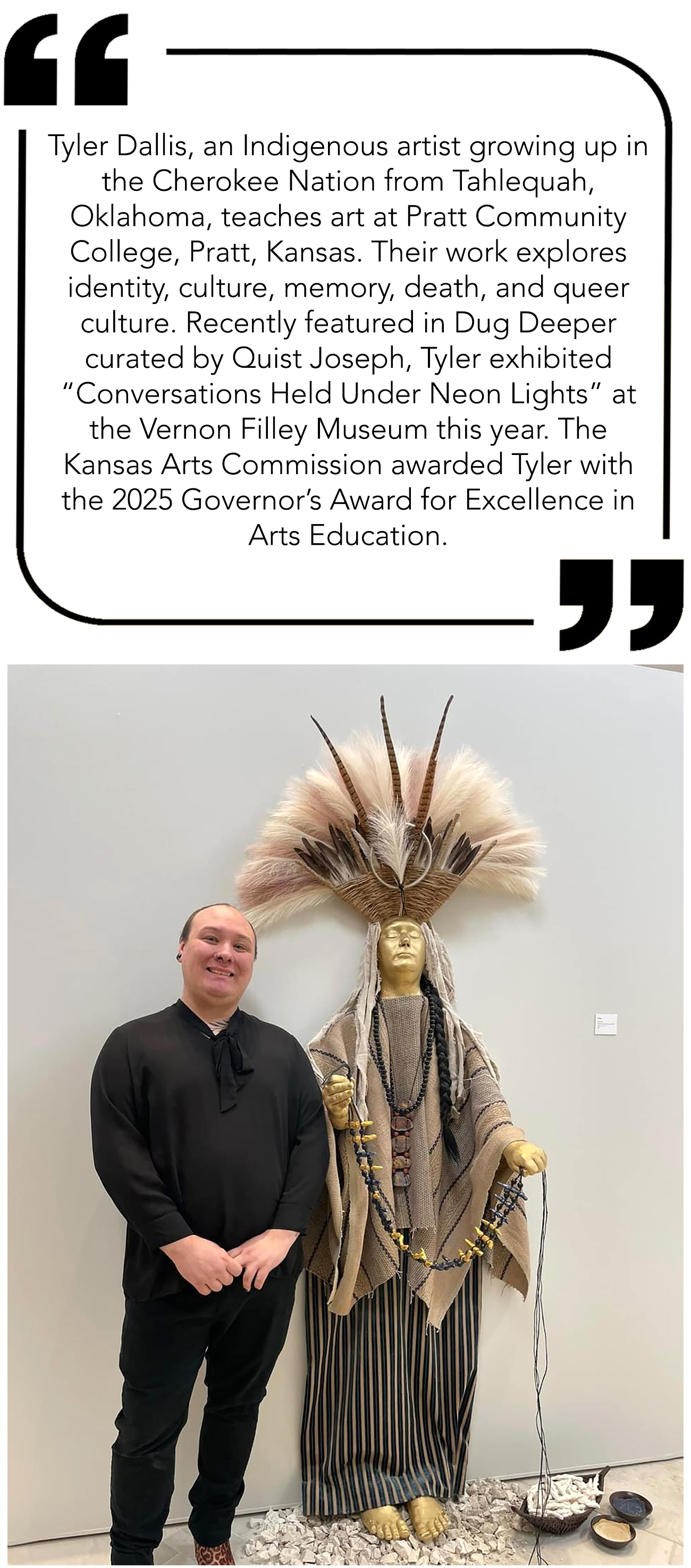 do their work or what they like or don’t. Learning to listen and empathize with a fellow artist are key skills to assisting in personal development. Questioning to assist the artist in considering aspects of their work that are not yet evident is also encouraged. Cold reads, in which the artist listens to how a viewer reacts to their art, are invaluable. The conversation of the graduate community is experienced and insightful, aimed at constructive growth.
do their work or what they like or don’t. Learning to listen and empathize with a fellow artist are key skills to assisting in personal development. Questioning to assist the artist in considering aspects of their work that are not yet evident is also encouraged. Cold reads, in which the artist listens to how a viewer reacts to their art, are invaluable. The conversation of the graduate community is experienced and insightful, aimed at constructive growth.
Experiential professional learning is encouraged. Working with local businesses, galleries, museums, arts centers, and community service projects is taught and encouraged. This integration of professional practice allows the individual to share their growth and fresh ideas while assisting them with their community recognition goals, as well as building networks and opportunities. Many artists seek to be locally respected and engaged cultural leaders. Still, some also desire to be globally recognized and seek to reach those goals through travel, exhibitions, workshops, residencies, and conferences. Employing technology through social media, websites, and online exhibitions assists them in reaching an audience that is both local and global.
Teaching technology has advanced, allowing online engagement to shift from sending handouts in the mail and holding conversations over the phone or e-mail to include the Zoom classroom, live broadcast demonstrations, and video presentations. Actual travel with completed artworks and research is expected at the end of each semester and is often paired with a visiting artist’s workshop. Focused summer workshops are offered in intense two-to-five-week sessions. An incredible community of intensely engaged artists has emerged from this program. Like a caterpillar evolving into a butterfly, students engaging in the MFA transformational process often make dramatic shifts in their art practices and lives.
Artists attracted to this style of program often hold their family, jobs, and local community as their highest values and cannot afford or do not want to leave their “lives” for the three- or four-year commitment that is often the base requirement for an MFA program. They were hungry to grow as artists and wanted to develop expertise to share with their communities. The students immersed in the low-residency MFA often balance demanding careers, family, and social commitments. They are busy people. Many are teachers, some hold master’s degrees, some work in community facilities, or are professional artists earning their living from art fairs and gallery sales. Some are shifting from one career to another. Or from one stage of life to another. Ages range from the newly graduated to those in their sixties. They come from many states and have incredibly rich backgrounds. They know what they want and what they don’t know, and are eager to learn more.
Often uncomfortable, it takes courage to weave the cocoon and put oneself in the middle of this transitional “soup.” Artists stretch and adjust, fail and restart, shift and 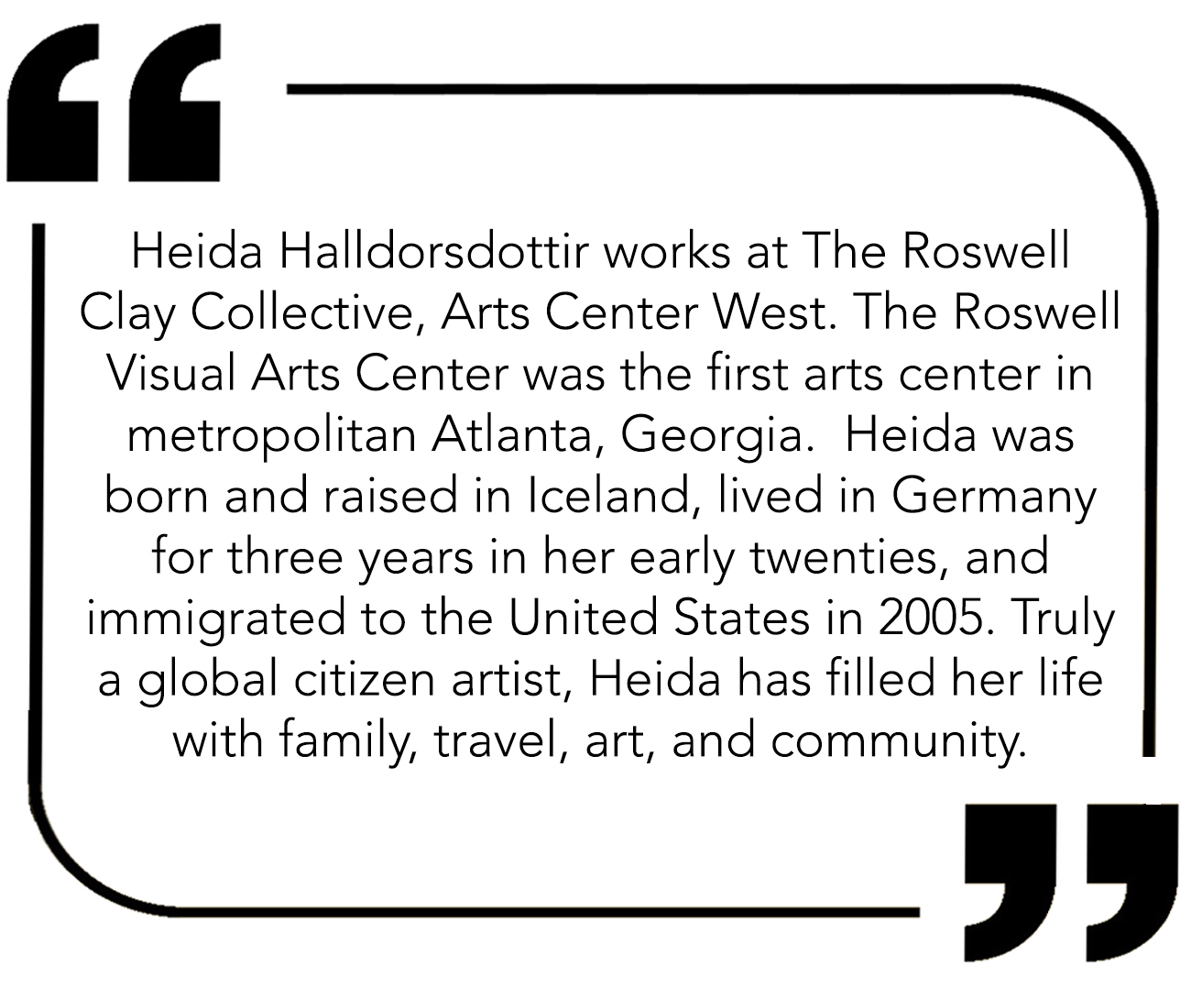 excel, sometimes surprising themselves. Not everyone completes the program, though many exceed their expectations. The degree opens doors, and their knowledge, skills, and portfolio set them apart and prepare them to share and lead. It’s OK to be uncomfortable. Education demands personal and financial sacrifice. While online tuition at FHSU is relatively low, the time and cost of travel and maintaining a studio are significant commitments and investments.
excel, sometimes surprising themselves. Not everyone completes the program, though many exceed their expectations. The degree opens doors, and their knowledge, skills, and portfolio set them apart and prepare them to share and lead. It’s OK to be uncomfortable. Education demands personal and financial sacrifice. While online tuition at FHSU is relatively low, the time and cost of travel and maintaining a studio are significant commitments and investments.
As art becomes increasingly decentralized and more widely embraced, opportunities abound for qualified art professionals. Armed with artistic and communication skills, a unique personal vision, and portfolios, artists can operate at both the local and global levels. Already integrated into the cultural network of their local communities, alumni quickly shift into the local job market and are employed in a variety of cultural professions, from teaching in high school to various roles in higher education, where teaching has increasingly shifted from face-to-face to environments incorporating technology. Some work and teach in community centers or open private art businesses and studios. Many have multiple revenue streams. They put their art into action.
If art is for everyone, some people get to lead. My advice is to prepare yourself for the life you most desire. Consider honestly what gives you purpose and makes you happy. Then go for it. Put your art into action. Build a better future. Art is for all.
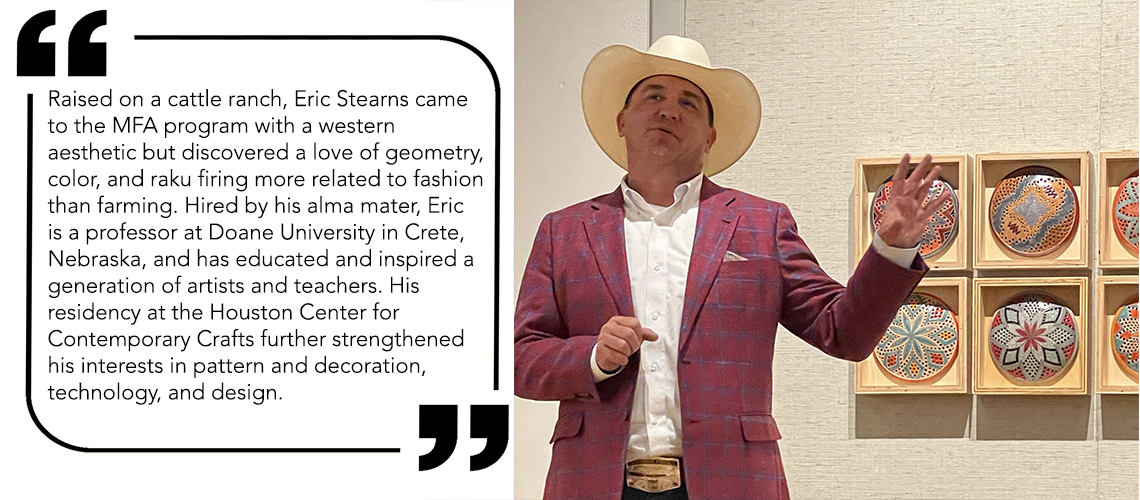
Additional Thoughts From Current Students
Ryan Trussell, MFA Candidate from Houston, Texas, writes:
THE DANGER OF LOW EXPECTATIONS
I listened to a podcast where Delvin Goode was interviewed, and he talked up the low-residency MFA ceramics program at FHSU and name-dropped Linda Ganstrom specifically. "Huh, that’s interesting," I thought to myself, and then went back to whatever I was doing, probably cooking dinner or looking for a lost shoe. Since 2013, I have held the multifarious job known colloquially as stay-at-home-dad, which is something of a misnomer; 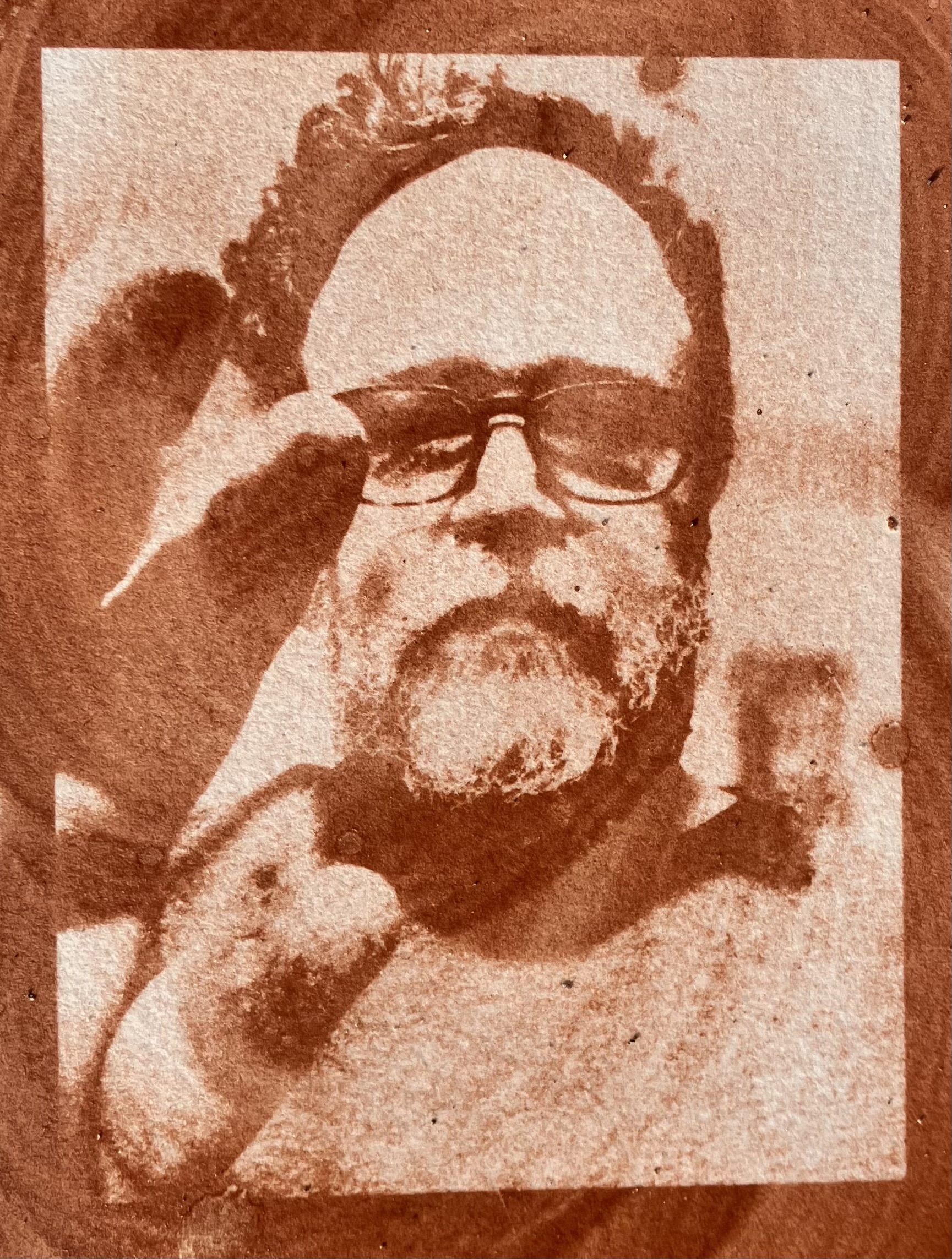 I am constantly leaving the house, breaking up the often interminable day with trips to the grocery store, the library, the park, the post office… the donut shop. A different title, I think, would be more fitting. There are “male nurses,” why not something like “male homemaker?” That has a less nugatory ring to it – more dynamic.
I am constantly leaving the house, breaking up the often interminable day with trips to the grocery store, the library, the park, the post office… the donut shop. A different title, I think, would be more fitting. There are “male nurses,” why not something like “male homemaker?” That has a less nugatory ring to it – more dynamic.
In another sense, I am also a homemaker. Among the bicycles, paint cans, broken dining room chairs, deflated inflatable kiddie pools, and holiday decorations that live in our garage, there are also a couple of pottery wheels, a slab roller, a wedging table, an electric kiln, and a shelf of dry materials. Ceramics is durable, both as a material and as an idea, and the one aspect of my twenty-something sense of self that has survived the crucible of marriage and parenthood is my identity as an artist who works with clay. For years, I worked in my garage studio as often as I could, but not consistently, with no real ambition or goals other than a few good pots. My children all eat and drink from dishes that I have made and that we have decorated. We have a “graveyard” window ledge on the front porch where the broken pieces of past favorites live as reminders of… whatever that sort of thing reminds you.
I mentioned the podcast, the low-residency MFA, offhandedly to my wife one evening, and she said, “You should look into that.” So I looked into it. I emailed Linda. I blew the digital dust off my neglected resume. I began to wonder about the possibility in earnest. I must admit that initially, I had low expectations 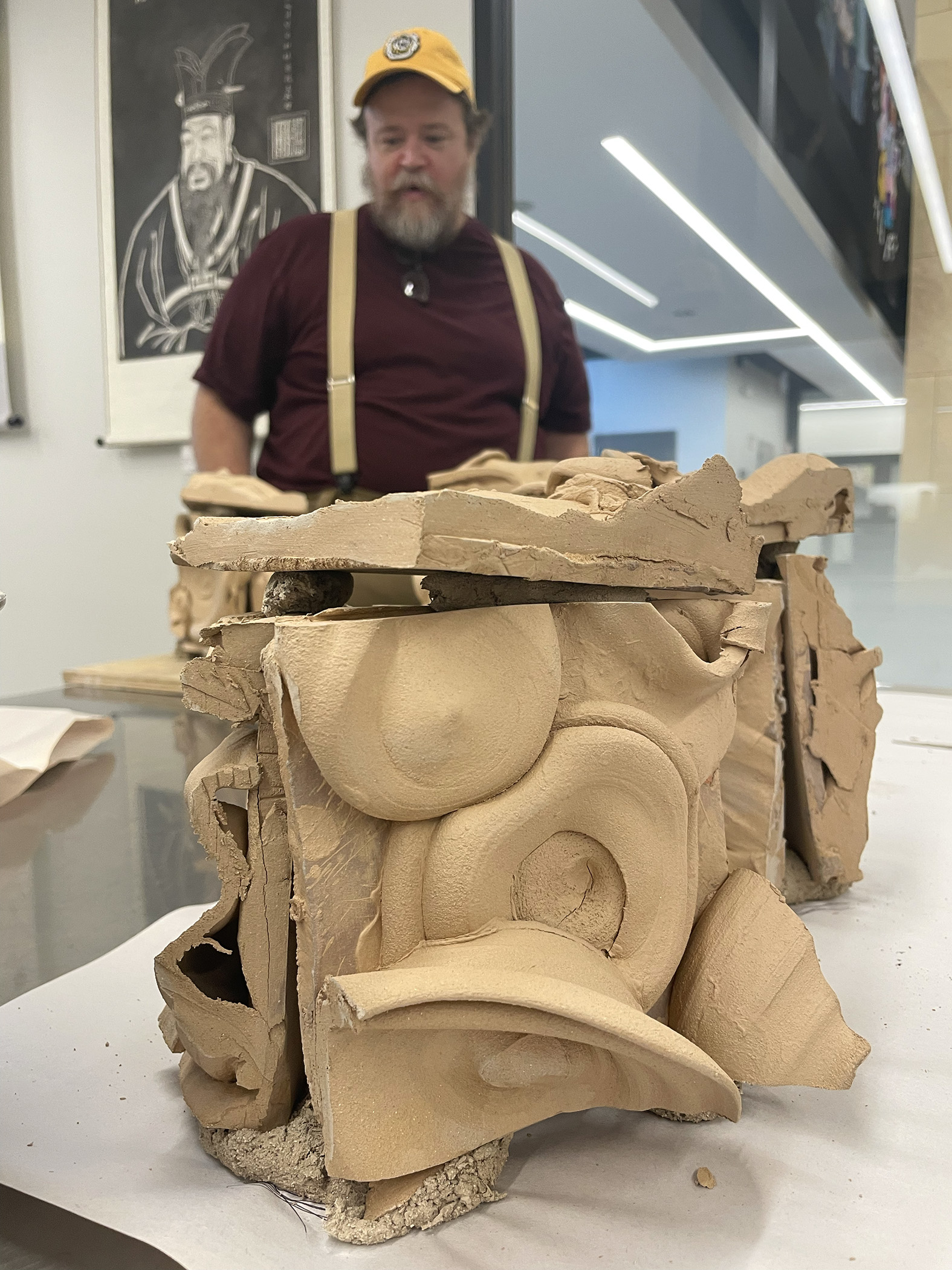 for the prospect of a low-residency MFA. Partly, this was born of unfamiliarity since there are not many such programs, and nobody I know has been through one. Undoubtedly, there was a touch of old-fashioned snobbery on my part, as well. I had an exceptionally rich experience as a ceramics BFA at the University of Arkansas in the early Jeannie Hulen and Adam Posnak years. The idea that anything approaching a rigorous graduate program could be conducted at a distance seemed unlikely. But, ultimately, what did I have to lose besides a little time and tuition?
for the prospect of a low-residency MFA. Partly, this was born of unfamiliarity since there are not many such programs, and nobody I know has been through one. Undoubtedly, there was a touch of old-fashioned snobbery on my part, as well. I had an exceptionally rich experience as a ceramics BFA at the University of Arkansas in the early Jeannie Hulen and Adam Posnak years. The idea that anything approaching a rigorous graduate program could be conducted at a distance seemed unlikely. But, ultimately, what did I have to lose besides a little time and tuition?
I now realize that there was also, baked into my low expectations for FHSU, a more insidious set of low expectations that I had begun, unknowingly, to apply to myself. Staying at home with small children has many joys, to be sure, but it can also feel like a slog. I’ve heard it said that the days drag on endlessly, but the weeks and months fly by, and my experience bears this out. Life can take on a Sisyphean flavor, and the prospect of something different can be hard to entertain, but overcoming the inertia and beginning the low-residency MFA has borne much fruit for me. One thing not to be underestimated is simply putting yourself in the position to benefit from a framework, however minimal, of outside accountability. Working in a vacuum (literally next to a vacuum) in my garage versus working toward something, making art that I will have to discuss and defend in a critical manner with a dedicated professor and fellow grad students (even if this happens mostly over a zoom video call) has been the shift in perspective that I needed to be able to see around the present moment to catch a glimpse of the future.
Holly Hendrick, M.Ed., MFA Candidate at FHSU writes:
PERFECT FIT: During COVID, as a forty-eight-year-old ceramics teacher, I sought an online Master’s Degree in ceramics. I thought it was a long shot, but times were changing – after all, I was teaching ceramics online to high school students. After asking my high school ceramics teacher's Facebook group, I learned about FHSU's low-residency MFA program led by Linda Ganstrom. Upon meeting Professor Ganstrom over Zoom, I knew this program was the perfect fit for me. It was the only option since I couldn’t quit my job, leave my family, or relocate for years to enroll in a traditional MFA program.
In education, we often talk about “inclusivity” and “equity,” but many ceramics learning institutions still operate as they have always done. Linda is a visionary in education. She has democratized ceramics learning, providi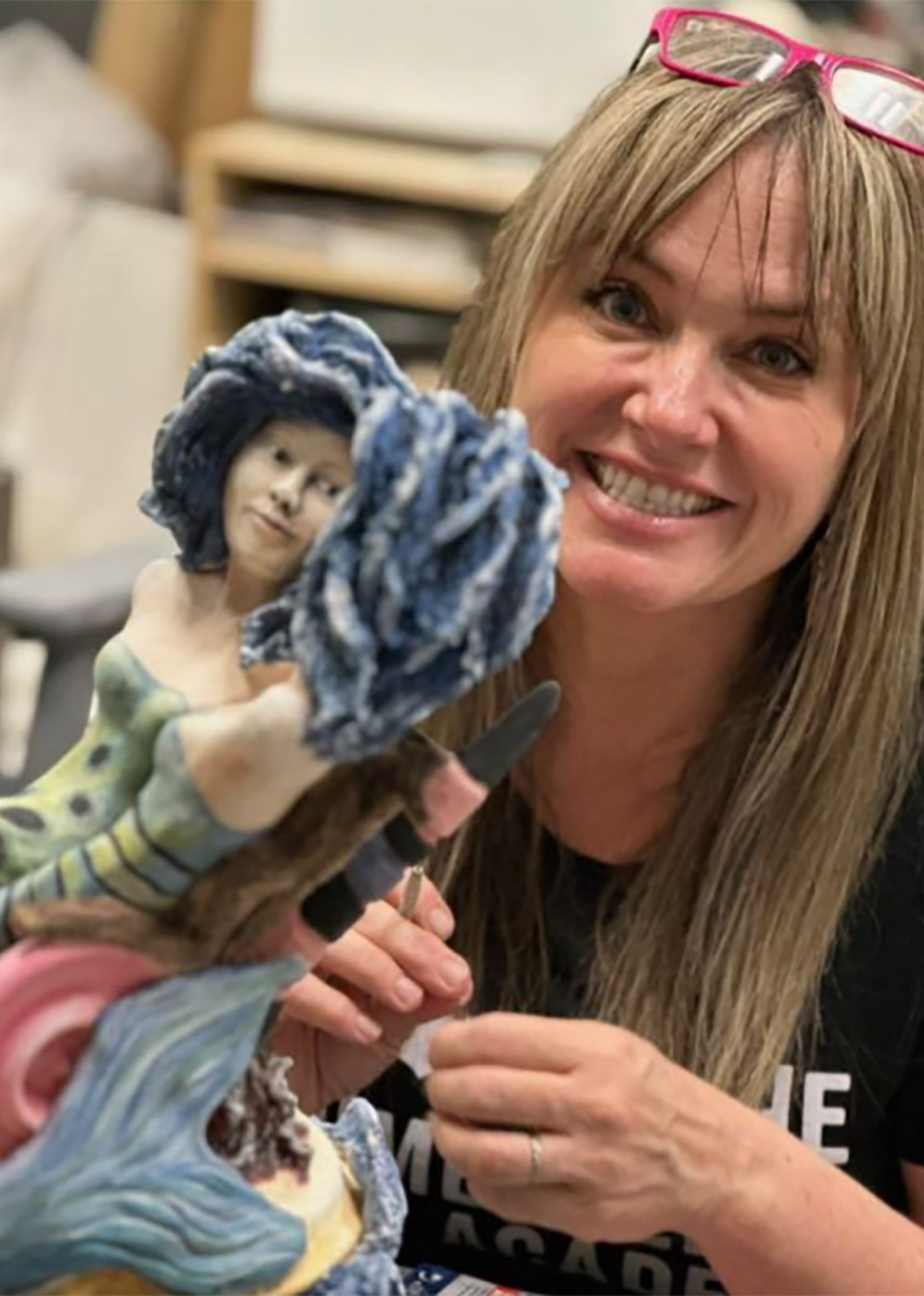 ng access to working adults across the country. She fosters an inclusive environment that accommodates diverse learning styles. I know of at least three people in the program, including myself, who identify as neurodivergent. She offers us opportunities that were previously out of reach, empowering us with the knowledge and skills needed to advance, regardless of background or circumstances.
ng access to working adults across the country. She fosters an inclusive environment that accommodates diverse learning styles. I know of at least three people in the program, including myself, who identify as neurodivergent. She offers us opportunities that were previously out of reach, empowering us with the knowledge and skills needed to advance, regardless of background or circumstances.
With over a dozen graduate students, this is one of the largest MFA programs in ceramics in the United States. The size of our group enriches our artistic conversations, allowing us to exchange valuable ideas for improving our work.
Since starting the program, we’ve been meeting on Zoom weekly, documenting our progress through photos in our reports, critiquing each other’s work, and receiving feedback from "Sensei #1," as I like to call Linda. At the end of each semester, we gather at FHSU for a final day of conversations and critiques. This program has transformed my life, shifting my perspective on art. As I continue to improve, I’m creating my best work and have even been accepted into a national show. Linda encourages us to pursue opportunities, no matter how lofty the goal. Words can’t truly express my gratitude for this once-in-a-lifetime opportunity!
